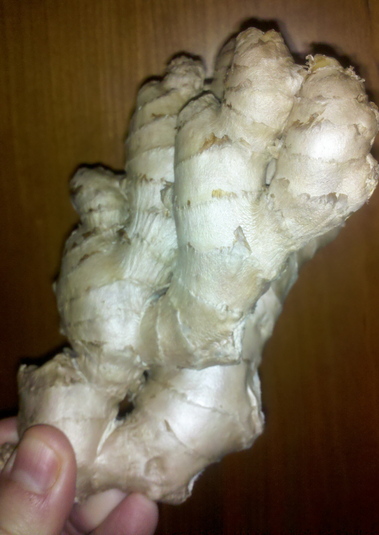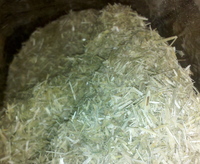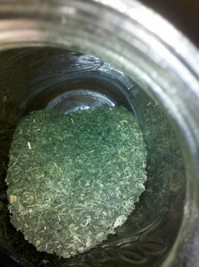Wildcrafting: There is no such thing as herbal tea?

Ginger root tea? To be accurate, what you'll want to make is a decoction.
Linda Diane Feldt | Contributor
Many people will be puzzled to learn that there is no such thing as an herbal tea. The word “tea” can only accurately be used to describe the plant Camellia sinensis. When you use that plant as a beverage, it is tea. If you use a different plant, it is no longer tea. I don’t know who made the rule, I don’t know why we have strayed so very far from it, but the accurate definition of tea remains dependent on the use of Camellia sinensis.
There are a variety of true teas, including but not limited to green, black and white. They are all from the same plant, harvested and prepared differently. True teas are steeped for just a few minutes; that is also part of what distinguishes a tea from a tisane, infusion and decoction.
Common usage wins, of course. But the correct word to use for an herbal beverage is a tisane. That is, any other plant than Camellia sinensis steeped in boiling water. Tisanes are made from rosehips, mints, chamomile and all the other herbs you may enjoy using to flavor hot water.

Oatstraw infusion is a good beginner's herbal beverage.
Linda Diane Feldt | Contributor
Let me quickly take you one step further, to an infusion. Most plants are chock full of nutrients, essential oils and tannins. Mints and lavender are two good examples of plants with essential oils. They are imparted to the beverage quickly and easily. You don’t want to steep these plants for more than a few minutes, maybe five to 10, or the flavor is overwhelmingly strong.
Water, alcohol or vinegar are three commonly used mediums to extract those constituents to gain the nutritional or medicinal value of an herb. If you use water, it is an infusion. If you use alcohol, it is most commonly called a tincture. An herbal vinegar was originally made from plants steeped in vinegar, not the singular sprigs you find so often now.

Stinging nettle makes a nutrient rich infusion
Linda Diane Feldt | Contributor
Vinegar is amazing for extracting minerals from herbs, including calcium. True herbal vinegars can be an outstanding source of very bio-available calcium. Alcohol is excellent for extracting the medicinal alkaloids as well as nutrients. Water is superior for the nutritional benefits, since it easier to consume multiple cups of the herb steeped in plain water. You can’t do that with alcohol extracts. The alcohol and vinegar also take weeks to steep (about six weeks), whereas water extracts generally take anywhere from 20 minutes to eight hours, depending on the herb, the part of the plant and most likely the opinion of the herbalist you consult.
A decoction is made by simmering a plant part, usually the root. The result is a reduction in liquid, but the medicinal part of the plant is infused into the resulting liquid. For example, a refreshingly strong (and therapeutic) ginger, Zingiber officinale, decoction is made by simmering about two inches of fresh chopped ginger (no need to peel it) in about a quart of water. Cover it with a lid, let simmer for about 20 minutes. Strain, then add honey, optional lemon, and enjoy. Ginger is well known for its help with easing nausea, sinus congestion, as an anti-inflammatory and for relief from colds and coughs. You can also make a compress by dipping a cloth into the decoction and place it over congested sinuses for quick relief. Be sure not to get any of the liquid into your eyes.

This Rooibos Masala Chai from Arbor Teas is full of flavor when steeped for three to five minutes; it takes longer for it to impart therapeutic benefit.
Linda Diane Feldt | Contributor
An infusion is also simply made. I enjoy stinging nettle, Urtica dioica, Oatstraw, Avena sativa, Red Raspberry, Rubus idaeus and Red Clover, Trifolium pratense, which are all nutrient rich. I usually introduce beginners to Oatstraw. The flavor is mild, appealing, and many feel an interesting combination of calm and energy after drinking it. When making an infusion, the dried herb is used, as the drying process breaks the plant’s cell wall and further ensures that the plant can then provide beneficial and healing nutrients. I use half gallon canning jars when I make an infusion. A quart jar is also OK. I place about an inch or a bit more herb in the jar and fill with water that is just off the boil. Place a lid on the jar and let sit for a few hours or overnight. Strain, and the liquid can then be reheated, served cold, or mixed with other liquids and sweetener if you’d like. One to two cups a day, or even a quart, is a normal amount. Whatever you don’t drink, store in the refrigerator for a day or two.
Roots generally take the longest to impart their benefit. For example, Echinacea angustifolia and most of the ginseng, Panax ginseng, roots you will find should be chopped and steeped at minimum three hours, and I usually give them eight to ten.
The People’s Food Co-op sells herbs in bulk, which is a less expensive way to make infusions. Many other health food stores will also sell bulk herbs. In a pinch, you could use tea bags but it will usually cost more.
There are many styles of herbalism, and some will endorse both shorter and longer times to steep infusions, or even boiling decoctions. I’m happy to agree to disagree. It is a matter of taste preference, different measurements and, in the end, is a bit like arguing over how much broccoli you should eat to get any benefit. I think the real point would be to just start eating more broccoli.
Experiment with what tastes good to you. But again, a plant high in essential oils should be steeped for just a few minutes, never as long as these infusions.
You can certainly still enjoy your herbal “teas” steeped for just a few minutes; just realize you are mostly enjoying the flavor and not so much the medicinal or nutritive benefits.
Once you do start using infusions and decoctions, be sure you know the herb well enough to make certain you want the nutrients or medicinal dose you will ingest. Herbs that are benign as “teas” may not be OK full strength. Licorice, hibiscus, cascara and others too numerous to mention can cause problems if steeped to full strength. Consider this an introduction; there is much more to learn and explore.
Linda Diane Feldt is a local Holistic Health Practitioner, Herbalist, teacher, and writer. You can follow her on twitter, visit her website, or contact her at ldfeldt(@)holisticwisdom.org
Full disclosure: Linda Diane is currently the President of the Board of Directors of The Ann Arbor People’s Food Co-op.


Comments
ArgoC
Sat, Dec 18, 2010 : 11:40 a.m.
Linda - I loved reading about the vocabulary of all the different herbal drink creation processes. I would love to also see something about the effects of heat, pH, oxygen, exposure to broad-spectrum light, alcohol, age, and so forth on what's being referred to nutrients in this article. How are the nutrients changed and/or disappeared when turned into tisanes etc? I wonder if we're getting what we think we're getting.